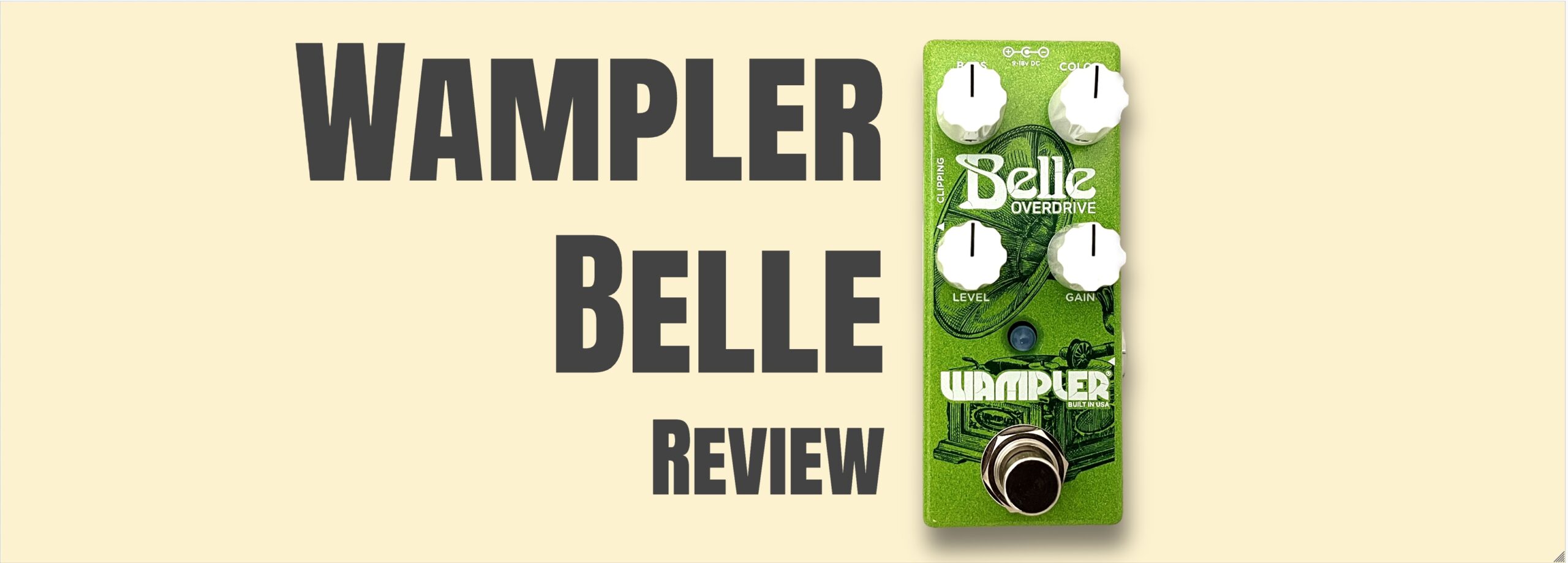
By Ian Waters
Posted 08/10/2024
The Wampler Belle Overdrive is a medium to low gain circuit based on the classic Nobles ODR-1, which had historically been a session player’s trade secret until YouTube made the pedal famous, driving prices sky high on the used market. Clones began popping up as well as Nobles themselves rebuilding the brand with a series of reissues.
Like most coveted holy grail items (read: Klon, King of Tone, vintage Tube Screamer) the reissues have come pouring in in all shapes and sizes with varying degrees of faithfulness and adventurous deviations. Wampler describe themselves as “tone freaks” having gone to great lengths to create what they consider a faithful yet more versatile version of the ODR-1 by keeping the familiar layout intact, but adding two extra parameters, bass control and a compression stage via a side switch. In doing so, the aim is to provide all of the attributes that made the original circuit famous and also have chameleon abilities to substitute for other classic pedals. Wampler’s attempt is to offer a pedal that will be “on your pedalboard forever”.
We demoed the Belle using a silverface Fender amp with a Tele, Strat and Les Paul and found that it holds up to the original design. With perhaps a couple more applications than the original, the Belle shines when going for the classic ODR-1 used for light to medium-gain country, rock, and blues playing styles.
Design and Layout
The original ODR-1 comes in a vibrant lime green in a slightly larger than average stomp box enclosure. The Belle pays homage to the lime green, but in classic Wampler style, offers the package in a mini-pedal format. Traditionally, the ODR-1 comes with three controls: a level knob, a volume knob, and a “spectrum” knob. Like most overdrive pedals, the mid range frequency is what defines its character and where the guitar can most effectively cut through a mix, hence the other famous green overdrive’s effectiveness due to its exaggerated mid-range response.
Like the original ODR-1 circuit, the Belle features a knob that keeps the pedal’s mid range intact and either adds or cuts high end from left to right, with the middle setting keeping all frequencies even in the mix. The original “spectrum” knob is here called “color” and is some of what makes the circuit unique, in that the forward mid range never gets reduced or added, only the lower or upper frequencies. In testing, this effectively acts as a second gain stage with the high cut reducing volume and cut, and when adding the highs back it seems to open up the pedal and be most effective.
While playing, the best use of the high cut (knob turned counter clockwise) is at high volume and gain levels a la Clapton’s “woman” tone. Otherwise the color knob seems to be most useful at around 2 o’clock or even at noon. Unity gain can be achieved with the drive at zero and the level at about 2, giving plenty of headroom once the gain is added in from minimal to maximum amount for plenty of dynamic range.
The added bass control knob allows for more control over the original circuit design’s somewhat overpowering bass response. In this parameter, the Belle’s design allows for fairly accurate emulations of the Klon and Tube screamer, which have less bass and a “honking” mid-range. Finally, for the last measure of control, there is a switch to smooth out the compression when playing with less or more gain. This control seems minimal unless playing with high volume levels. Overall, the controls are intuitive and musical in most settings.
Who Is the Wampler Belle For?
The Belle shines as a sort of amp-in-a-box style pedal. It has a great always-on edge of breakup sound that allows dynamics to be controlled by the player’s playing hand. Like the famed circuit, the Belle has a beefy yet transparent quality that makes clean lines sound full and throaty and when dug in lead lines sound crisp and urgent.
The most versatile setting is to start at unity gain with the drive at zero and the volume to about 2 and to add gain to taste around 11 o’clock. Then dial out a touch of bass and bump the color to emphasize the highs ever so much. This works well on both single-coils and humbuckers to add clarity and dynamic range that can be controlled with volume knobs and pick attack to give an amp more breadth of sound. It works well as an always-on pedal and can serve as a primary component of gain-staging. And, with Wampler’s robust and economical layout, it serves the modern guitarist’s pedalboard well enough to stay on virtually indefinitely. Priced affordably at under $150 and plenty of fair deals on the used market, the Belle is perhaps the best option for a modern player looking for a classic staple of a sound in a very economical size and price.
